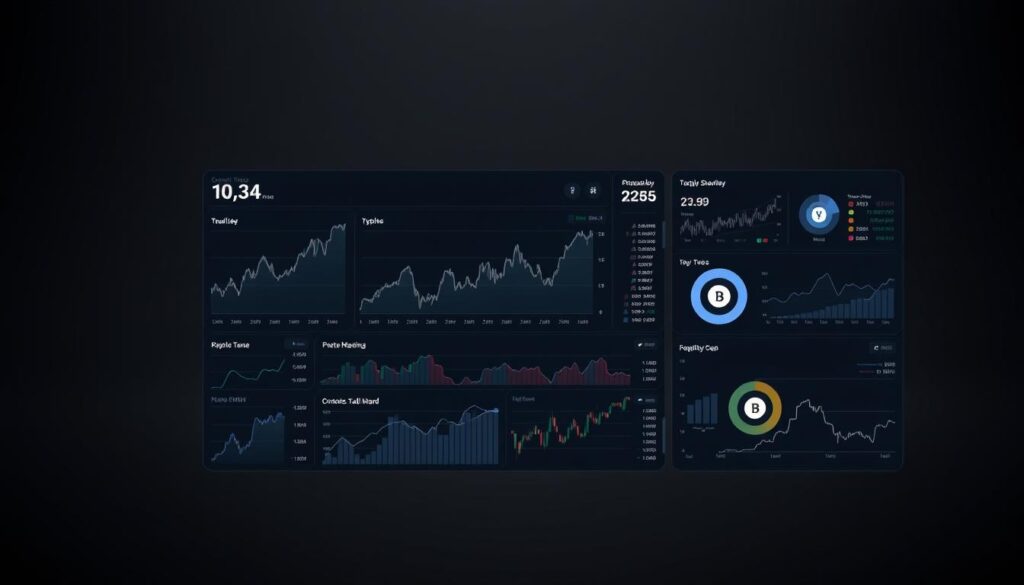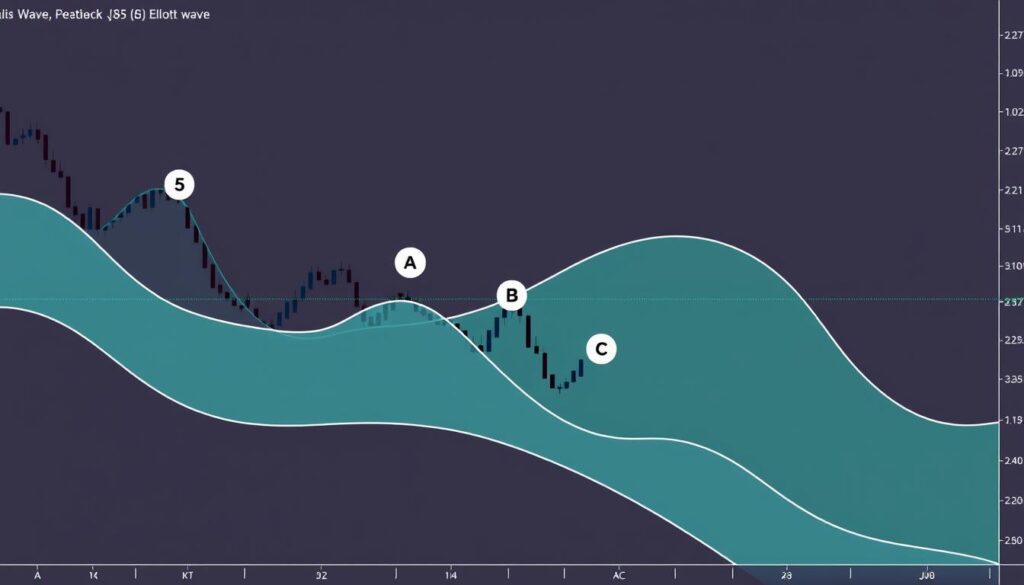Now Reading: Invest in Undervalued Altcoins with Strong Fundamentals Today
- 01
Invest in Undervalued Altcoins with Strong Fundamentals Today
Invest in Undervalued Altcoins with Strong Fundamentals Today

The digital asset landscape in 2025 is buzzing with potential. While Bitcoin and Ethereum dominate headlines, a world of opportunity exists beyond them. Many are looking towards smaller, promising projects for significant growth.
Current momentum is undeniable. Major cryptocurrencies are hitting new highs, and institutional money is flowing in. This creates a perfect environment for smaller-cap digital assets to shine. These projects often offer higher growth potential for those who do their homework.
Success hinges on understanding what makes a project solid. Key factors include innovative technology, real-world utility, and an active, supportive community. Identifying these traits is crucial for making smart moves in this dynamic space.
This guide will help you navigate these waters. We provide clear insights into market trends and risk management. For a deeper dive, explore our list of the top 5 undervalued altcoins worth watching this year.
Whether you’re new to crypto or a seasoned participant, this article offers the knowledge to make confident decisions. Get ready to explore the exciting possibilities within the digital currency market.
Key Takeaways
- The 2025 crypto market offers significant opportunities beyond major players like Bitcoin.
- Smaller and mid-sized digital assets can provide higher potential returns.
- Evaluating a project’s technology and real-world use is essential for smart investing.
- Understanding market dynamics helps in managing risk effectively.
- Thorough research is the key to identifying promising investments in this volatile space.
Introduction to the US Cryptocurrency Market
The United States cryptocurrency ecosystem has reached unprecedented maturity levels in 2025. Total market capitalization now exceeds $2 trillion, reflecting substantial growth in this dynamic financial space.
Overview of Digital Assets
Digital assets encompass a diverse range of cryptocurrencies beyond Bitcoin. These innovative technologies power various applications across different sectors.
They facilitate decentralized finance platforms and enable smart contract execution. Many also support emerging Web3 infrastructure and artificial intelligence applications.
Market Capitalization Trends
Recent market data reveals significant capital rotation within the crypto space. Bitcoin’s dominance has declined to 56%, indicating increased interest in alternative digital currencies.
This shift suggests the beginning of a period where smaller projects may outperform major assets. Understanding these market cap dynamics helps investors identify promising opportunities.
Understanding Altcoins and Their Market Cap Dynamics
Market capitalization provides crucial insights into cryptocurrency investment opportunities. This metric helps investors gauge a project’s relative size and potential within the competitive crypto landscape.
Alternative coins serve diverse functions beyond simple payments. They power smart contracts, decentralized applications, and emerging technological infrastructure. This variety creates numerous investment possibilities across different market segments.
Market cap calculation involves multiplying current price by circulating supply. This figure represents the total value of all available coins. It serves as a key indicator for comparing different digital assets.
Low-cap projects typically fall below $100 million in valuation. Micro-cap coins often trade under $50 million. These categories present distinct risk-reward profiles that require careful evaluation.
Smaller market cap coins experience greater price volatility. Modest capital movements can significantly impact their value. This creates both substantial gain potential and considerable loss risk.
Recent data shows nearly half of projects launched since 2021 have failed. This highlights the importance of thorough research before investing in smaller-cap opportunities.
Successful coins can progress through market cap categories as they gain adoption. Early identification of promising projects offers significant growth potential. However, market cap alone doesn’t tell the full story.
Investors should consider additional factors like token distribution and real usage metrics. These elements provide a more complete picture of a project’s true investment potential in the dynamic crypto market.
The Importance of Strong Fundamentals in Altcoin Investments
Beyond price charts and market hype lies the critical examination of what makes a digital asset valuable. This deeper analysis focuses on the essential qualities that determine long-term success.
Understanding these core elements helps investors make informed decisions. It separates sustainable opportunities from temporary market trends.
Defining Fundamentals in Crypto Projects
Fundamentals represent the underlying health of any crypto venture. They include technological innovation, team expertise, and real-world utility.
Projects with solid foundations demonstrate consistent growth potential. They withstand market volatility better than speculative assets.
Thorough research into these areas reveals a project’s true potential. Investors should examine multiple data sources for comprehensive analysis.
| Fundamental Factor | Critical Elements | Research Sources | Impact on Value |
|---|---|---|---|
| Technology | Blockchain architecture, security, scalability | GitHub activity, technical documentation | High long-term potential |
| Team Quality | Experience, transparency, roadmap delivery | Team backgrounds, communication history | Strong confidence indicator |
| Tokenomics | Supply distribution, utility, inflation | Whitepapers, economic models | Sustainable demand driver |
| Adoption Metrics | User growth, partnerships, real usage | On-chain data, partnership announcements | Organic value appreciation |
Focusing on these fundamental aspects leads to smarter investment choices. They provide a framework for evaluating any digital asset project.
Quality research into these areas separates successful investors from those following short-term trends. The effort pays dividends over time.
Overview of Market Trends in the Crypto Space
The cryptocurrency landscape in late 2025 is defined by powerful momentum and shifting capital flows. This period of sustained growth presents unique opportunities for informed participants.

A key indicator is Bitcoin’s declining dominance, now at 56%. This often signals the start of an “altcoin season.” During this phase, smaller projects can outperform major assets.
Current Bull Market Insights
The ongoing bull market is robust. Bitcoin maintains prices above $118,000, attracting substantial institutional capital. This influx lends credibility and provides deep liquidity for the entire crypto market.
Specific sectors are leading the charge. AI-focused crypto projects were top performers in Q3. The entire AI sector reached a market cap of $24-27 billion.
This growth highlights a market trend favoring utility. Investors now prioritize projects with real-world applications and active development.
Understanding these bull market dynamics is crucial. While optimism is high, disciplined analysis remains essential for identifying sustainable opportunities in this vibrant market.
Risks and Rewards of Investing in Low-Cap Cryptocurrencies
Navigating the world of small-cap digital assets requires understanding both their explosive potential and significant dangers. These investments can deliver extraordinary returns but carry substantial risks that demand careful management.
Investors must recognize that smaller projects operate differently from established cryptocurrencies. The market dynamics create unique challenges that can impact investment outcomes significantly.
Volatility and Liquidity Concerns
Price swings in low-cap crypto assets can be dramatic. Double-digit percentage changes often occur within single trading sessions.
This volatility creates both opportunity and danger. Limited trading volumes mean large orders can move the market price substantially.
Exiting positions during stress becomes challenging. Investors may struggle to sell at desired price points when liquidity dries up.
Regulatory and Market Manipulation Risks
Smaller projects face greater regulatory uncertainty. Their legal status often remains unclear under current securities laws.
Low trading volumes make these assets vulnerable to manipulation. Pump-and-dump schemes can artificially inflate values before collapsing.
Development teams may lack resources to deliver on promises. Some projects face abandonment when funding or momentum disappears.
Despite these risks, successful low-cap cryptocurrencies can generate massive returns. Proper research and risk management help navigate this complex crypto segment.
Exploring Use Cases and Real-World Applications
Practical applications separate promising digital assets from mere speculation in today’s market. Projects with tangible utility demonstrate greater potential for sustained growth.

Real-world use cases distinguish valuable projects from purely speculative ones. The most promising initiatives solve actual problems across multiple sectors.
These applications span diverse areas including cross-chain interoperability and decentralized finance. Supply chain transparency and digital identity solutions also show significant promise.
Smart Contracts and Blockchain Integration
Smart contract functionality represents a foundational use case for many leading projects. These self-executing agreements have terms written directly into code.
This technology eliminates intermediaries and reduces transaction costs. It increases transparency while facilitating complex financial instruments.
Blockchain integration demonstrates expanding applications beyond financial speculation. Industries like logistics and healthcare implement these solutions for improved efficiency.
Real estate, entertainment, and government services also benefit from this technology. The security and transparency advantages drive adoption across sectors.
Evaluating use cases requires assessing market demand and technical feasibility. Strong investments target applications with clear value propositions and user growth.
In-Depth Analysis of “undervalued altcoins with strong fundamentals”
Effective investment decisions in the crypto space require a structured approach to project assessment. A thorough evaluation framework helps identify opportunities with genuine potential.
Quality assessment involves examining multiple dimensions of each digital asset. This systematic process separates sustainable investments from speculative ventures.
Criteria for Evaluating Altcoin Quality
Technology innovation serves as the foundation for any promising project. Analyzing blockchain architecture and scalability solutions reveals technical strength.
Team expertise and track record provide confidence in development capabilities. Transparent communication and consistent progress indicate reliable leadership.
Token economics examine supply dynamics and utility within ecosystems. Clear use cases and fair distribution mechanisms support long-term value.
Adoption metrics offer objective evidence of real-world usage. Growing transaction volumes and developer activity signal organic growth.
Comparative analysis positions assets against sector competitors. Identifying unique advantages helps assess market positioning and potential.
Community engagement reflects genuine user interest beyond trading. Active participation in governance and development indicates sustainable support.
Relative valuation compares market metrics with similar projects. This research helps identify assets trading below their fundamental value.
List of Top Low-Cap Crypto Projects to Watch
Investors seeking growth opportunities often turn to smaller market cap crypto projects for their potential upside. These emerging ventures offer innovative solutions across various blockchain sectors.

Current market data reveals several promising candidates worth monitoring. Each brings unique technology and real-world applications to the table.
Examples from Recent Market Data
Celer Network (CELR) operates as a Layer-2 scaling protocol with a $65M market cap. This network enables fast cross-chain transactions across 40+ blockchain networks.
DIMO creates a decentralized platform for vehicle data monetization. The token trades at $0.070 with a $28M market cap.
Hivemapper builds a decentralized mapping network rewarding contributors. This project demonstrates practical utility with a $73M valuation.
LUKSO focuses on digital identity as a Layer-1 blockchain. The platform targets creative economies with a $31M market cap.
Nolus offers a defi protocol with innovative lending solutions. This project shows strong recent performance despite its small $7M valuation.
Phala Network provides confidential computing for privacy-preserving applications. The protocol integrates with Polkadot’s ecosystem at an $86M market cap.
Propy streamlines real estate transactions through blockchain technology. The platform has processed over $4 billion in property deals.
io.net serves as a decentralized GPU cloud provider for AI applications. This network capitalizes on the AI boom with a $117M valuation.
Kima Network bridges traditional finance and defi as a payment protocol. The project targets massive real-world asset tokenization markets.
Oraichain stands as the first AI-powered oracle and blockchain platform. This unique protocol operates in the expanding AI-crypto sector.
Technological Innovations and Smart Contract Integration
Innovations in distributed ledger technology are reshaping the foundation of decentralized applications. These advancements create more efficient and capable blockchain networks.
Modern protocols introduce sophisticated solutions for transaction processing. They enhance security while improving scalability across different platforms.
Smart contract capabilities represent a critical innovation area. These self-executing agreements automate complex processes without intermediaries.
More advanced virtual machines and programming languages expand what’s possible. They attract developer communities building diverse applications.
Layer-1 vs. Layer-2 Solutions
Layer-1 blockchains serve as foundational protocols. They process transactions directly on their native networks.
Examples include Ethereum, Solana, and emerging platforms. Each offers unique approaches to decentralization and security.
Layer-2 solutions build atop existing Layer-1 networks. They process transactions off-chain before final settlement.
This approach enhances performance while maintaining security. It enables faster, cheaper transactions for users.
Interoperability technology connects different blockchain ecosystems. It enables cross-chain communication and asset transfers.
Scalability innovations remove throughput bottlenecks. They allow networks to handle millions of transactions efficiently.
The Role of Community and Developer Support in Altcoin Success
A project’s vitality often stems from its people, not just its code. A dedicated community and active developers are powerful indicators of long-term potential. They create an ecosystem that fuels growth and adoption.
An engaged community provides more than just hype. It drives real network effects. Each new user adds value for everyone else. This organic growth is difficult to replicate.
Look for active governance participation and quality social discussions. These show genuine belief in the project‘s future. They are better signs than just high follower counts.
Developer activity is equally critical. A healthy ecosystem attracts talented builders. Frequent code updates and good documentation signal a living, evolving platform.
This developer support leads to new applications. It expands use cases and attracts more users. The table below shows key metrics to evaluate for any digital asset.
| Area of Support | Key Metric to Track | What It Indicates |
|---|---|---|
| Community Strength | Governance participation rate | Long-term stakeholder commitment |
| Social Engagement | Quality of forum discussions | Organic, grassroots advocacy |
| Developer Activity | Number of active GitHub contributors | Vibrant and collaborative network |
| Ecosystem Growth | Third-party applications built | Real-world utility and adoption |
Projects that master both areas build a powerful moat. They create sustainable advantages that drive success through market cycles. This human element is a cornerstone of a resilient digital asset.
Leveraging Institutional Inflows and Market Sentiment
The influx of institutional money represents a pivotal shift in crypto market structure and sentiment. Professional investors are bringing new dynamics to digital asset pricing and demand patterns.
Recent Data on Institutional Activity
Weekly inflows exceeding $4.39 billion demonstrate significant institutional participation. Major asset managers like Bitwise and Grayscale are seeking ETF approvals for additional cryptocurrencies.
Analysts project over 90% approval odds for Ripple and Litecoin ETFs before year-end. This regulatory progress could unlock billions in new investment demand.
Sentiment Analysis in Crypto Investments
Market sentiment tools track social media discussions and trading patterns. These indicators help investors gauge psychological trends affecting crypto prices.
The Crypto Fear and Greed Index provides valuable insights into market extremes. Extreme fear often signals buying opportunities in quality projects.
| Investment Characteristic | Institutional Approach | Retail Approach | Market Impact |
|---|---|---|---|
| Due Diligence | Extensive research teams | Individual analysis | Higher quality standards |
| Time Horizon | Long-term positioning | Short-term trading | Reduced volatility |
| Regulatory Focus | Compliance priority | Secondary concern | Enhanced legitimacy |
| Capital Allocation | Portfolio diversification | Concentrated positions | Broader market participation |
Bitcoin’s declining dominance to 56% suggests capital rotation toward alternative cryptocurrencies. This environment creates favorable conditions for strategic investment timing.
Strategies for Maximizing Crypto Investment Returns
Successful crypto investors employ systematic strategies to optimize their portfolio performance over time. These approaches help manage volatility while pursuing sustainable growth.

Implementing disciplined techniques separates consistent performers from speculative traders. The right strategy depends on individual risk tolerance and investment goals.
Dollar-Cost Averaging and Diversification
Dollar-cost averaging involves regular fixed-amount purchases regardless of market conditions. This method reduces timing risk and emotional decision-making.
Diversification spreads capital across different digital assets and sectors. A balanced portfolio minimizes exposure to any single project’s performance.
| Strategy | Primary Benefit | Risk Level | Time Commitment |
|---|---|---|---|
| Dollar-Cost Averaging | Reduces average purchase price | Low | Minimal |
| Portfolio Diversification | Risk mitigation | Medium | Moderate |
| Staking | Passive income generation | Medium | Low |
| Yield Farming | Enhanced returns | High | High |
Staking, Yield Farming, and Mechanisms for Growth
Staking allows token holders to earn rewards by participating in network security. This provides passive income while supporting blockchain operations.
Yield farming in DeFi protocols offers higher returns through liquidity provision. Investors deposit assets to earn fees and additional tokens.
These mechanisms create multiple revenue streams beyond simple price appreciation. They represent advanced strategies for experienced investors seeking growth.
Key Metrics and Fundamental Analysis for Altcoins
The most reliable investment signals come from the blockchain’s own transparent data ledger. On-chain metrics provide objective evidence of a project’s health. They reveal real adoption beyond price speculation.
These data points track activity directly on the blockchain. They include active addresses and transaction counts. This information shows genuine user engagement.
On-Chain Analytics and Usage Metrics
Active address counts measure unique wallets interacting with a network. Growing numbers indicate an expanding user base. Declining counts can signal waning interest.
Transaction volume reveals the economic activity on a platform. Sustained increases suggest growing utility. Analysts must distinguish real activity from artificial volume.
Total Value Locked (TVL) is critical for DeFi protocols. It measures assets deposited in smart contracts. Rising TVL shows growing trust and capital efficiency.
Network fees demonstrate a protocol’s ability to capture value. Projects generating substantial fees have more sustainable models. This is better than relying on token inflation.
| Key Metric | What It Measures | Why It Matters |
|---|---|---|
| Active Addresses | Unique participating wallets | Indicates genuine user adoption |
| Transaction Volume | Economic activity level | Shows real-world utility and usage |
| Total Value Locked (TVL) | Assets in smart contracts | Reflects user trust and ecosystem health |
| Developer Activity | Code commits and contributors | Signals ongoing innovation and project health |
Developer activity is a leading indicator. Frequent GitHub commits show ongoing improvements. This maintains a project’s competitive edge.
Holder distribution analysis reveals token concentration. Widespread ownership reduces manipulation risk. It indicates broader community participation.
Tracking these metrics provides a clear picture of a project’s foundation. It helps investors make informed decisions based on data.
Emerging Trends: AI Integration and DeFi in Altcoins
Two technological revolutions are colliding as AI integration transforms decentralized finance platforms. The AI-crypto sector reached $24-27 billion in market capitalization during Q3 2025, making it one of the top-performing segments.
AI-Powered Platforms and Decentralized Finance
Artificial intelligence brings new capabilities to blockchain technology. Projects like Oraichain enable smart contracts to access external AI APIs. Phala Network allows developers to create autonomous AI agents.
Decentralized finance continues evolving beyond basic lending. New protocols offer sophisticated financial instruments. They include options trading and real-world asset integration.
The intersection creates powerful synergies. Machine learning optimizes yield farming strategies. AI agents can autonomously manage investment portfolios.
| Innovation Area | AI Contribution | DeFi Application |
|---|---|---|
| Compute Infrastructure | Decentralized GPU resources | Machine learning model training |
| Financial Optimization | Predictive analytics | Portfolio management and risk assessment |
| Smart Contract Enhancement | External AI API integration | Advanced contract automation |
| User Experience | Natural language processing | Simplified protocol interaction |
Infrastructure projects like io.net provide decentralized computing power. This supports the growing demand for AI applications. Understanding DeFi protocol risks remains crucial for investors.
Adoption accelerates as technology matures. Both crypto-native users and traditional finance participants are embracing these innovations. The ecosystem continues to expand with real-world utility.
Practical Investment Tips for the US Crypto Market
Navigating the US crypto market successfully requires a disciplined approach and practical knowledge. Smart investors focus on security and continuous learning to build a solid portfolio.
Always conduct thorough research before buying any digital coins. Examine the project’s team, technology, and community. This helps you understand its true potential beyond short-term prices.
Choose reputable exchanges that follow US regulations. Platforms like Coinbase and Kraken offer important protections for your funds.
Security is non-negotiable. Use hardware wallets for large holdings and enable two-factor authentication. Never share your private keys.
| Security Practice | Key Action | Benefit |
|---|---|---|
| Wallet Management | Use a hardware wallet | Offline storage, maximum security |
| Account Protection | Enable two-factor authentication | Prevents unauthorized access |
| Information Safety | Never share seed phrases | Protects against theft |
| Vigilance | Beware of phishing scams | Avoids loss from fraud |
Keep detailed records for tax purposes. The IRS requires reporting of all transactions. Specialized software can simplify this process.
Avoid emotional decisions driven by FOMO. Set clear goals and stick to your strategy. Stay informed about regulatory changes that can affect the market.
Conclusion
As we conclude our exploration of the crypto landscape, the path to successful investing becomes clearer through disciplined analysis. The current market environment offers remarkable opportunities for those who prioritize thorough research.
Identifying digital assets with solid fundamentals remains the cornerstone of sustainable growth. Projects demonstrating real utility and active development show the greatest potential for long-term success.
The evolving crypto ecosystem continues to present new possibilities. Emerging altcoins with innovative technology can deliver substantial returns when properly evaluated.
Risk management and continuous learning are essential in this dynamic space. Investors who maintain patience and focus on quality projects will be best positioned to capitalize on the market‘s potential.
Remember that successful crypto investing requires both optimism and realistic assessment. The right combination of research and strategy can unlock significant value in promising altcoins.
FAQ
What are altcoins?
Altcoins are all cryptocurrencies other than Bitcoin. They often have different goals, technologies, and use cases. Examples include Ethereum (ETH), Solana (SOL), and Cardano (ADA).
Why is market capitalization important in crypto?
Market cap helps gauge a project’s relative size and stability. It’s calculated by multiplying the current price by the total supply of coins. A higher market cap often suggests a more established network.
What does "strong fundamentals" mean for a cryptocurrency?
It refers to the core health of a project beyond its price. This includes a real-world use case, an active community, a solid team, and proven technology like smart contract capabilities.
How can I identify a promising low-cap crypto project?
Look for projects with a clear purpose, growing user adoption, and transparent development. Check their tokenomics, partnerships, and on-chain metrics like daily transactions.
What are the main risks of investing in smaller cryptocurrencies?
These assets can be highly volatile and have low liquidity. There’s also a higher risk of market manipulation and regulatory uncertainty compared to larger, more established coins.
What role does a project’s community play in its success?
A strong, engaged community drives adoption, provides feedback, and helps build the ecosystem. Developer support is also crucial for ongoing innovation and network upgrades.
How can I use fundamental analysis for crypto investments?
Focus on on-chain data like network growth, transaction volume, and active addresses. Also, research the team’s background, the project’s roadmap, and its competitive advantages.
What is the difference between Layer-1 and Layer-2 blockchain solutions?
Layer-1 is the base network, like Ethereum or Bitcoin. Layer-2 solutions are built on top of these to improve scalability and speed, such as Polygon on the Ethereum network.














